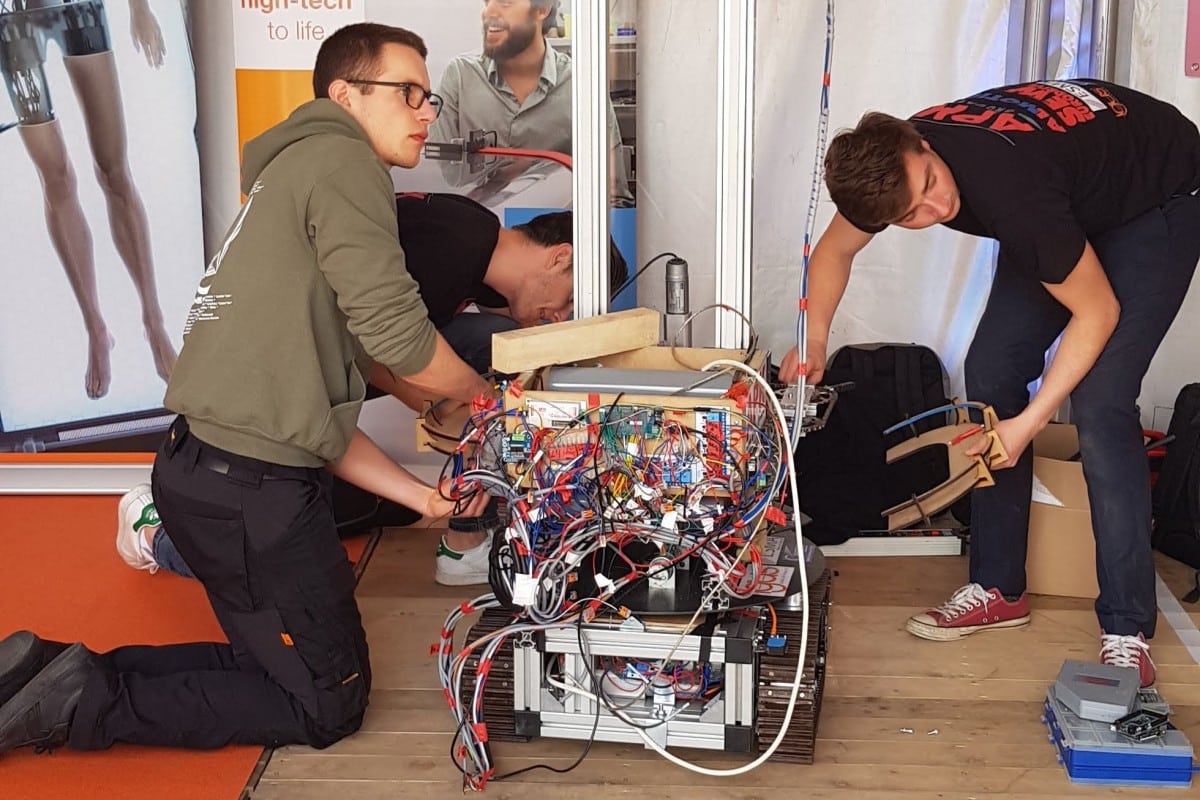
“Ah, here’s a loose cable”, says a Belgian student lying under a robot on wheels. “Can you fix it?” The command sounds tense. A student team from the University of Hasselt has no time to answer a journalist’s questions. They are preparing for the final of the Sioux Mechatronica Trophy which is about to start. Twelve teams from universities and colleges from all over Europe have recently built their own robots and all of them have been competing for first place. The assignment? Building a machine that takes full batteries from a solar charging station and replaces them with empty batteries: an Automatic Battery Changer (ABC). The ABC that changes all fifteen batteries from the station in the fastest way wins the trophy.
What else has happened during the Dutch Technology Week?
Where the Belgian students are still sweating, on the other side of the Ketelhuisplein, a team of the Avans University of Applied Sciences from Breda is standing by idly; hands in their pockets, no robot to be found. “There’s no point in retesting everything now, the chance of breaking something is much greater”, says Job, who, like the rest of his team members, only joined in halfway through the construction of the robot. “So we just wait for now. Our robot was built by two groups from the minor Robotics & Vision. So we continued with the design that was made by others.” Only Michael was involved from the beginning. “Graduating was no longer possible for me and doing nothing for six months is not an option. So I joined this project”, he explains. Laughingly they say they’re aiming for the victory, but they don’t seem so sure about that: “Our positioning is not great, we are actually already happy when the robot is able to grab one battery. But we just assume that other teams will have even more trouble with it.”
With a starting budget of 750 euros and guidance from Sioux specialists, teams started construction in September. For example, they received support to enable different hardware components that work well together. For some teams, this is the first time that they use the theory from the training to assemble a complete machine. “Normally you only make a small part, but it’s cool to put everything together and make sure that your robot actually works. The challenge is much greater,” says a student from Fontys Eindhoven.
The Mechatronics Trophy is part of the Sioux Tech Festival that takes place during the Dutch Technology Week. At this two-day event, technicians can have fun with robot musicians, VR setups and a mobile escape room. But there’s also a lot of attention for the more social projects. For example, the exoskeleton that helps people with a spinal cord injury to walk again. ‘Project March’ will show how this works technically and what it takes to develop such an exoskeleton.

